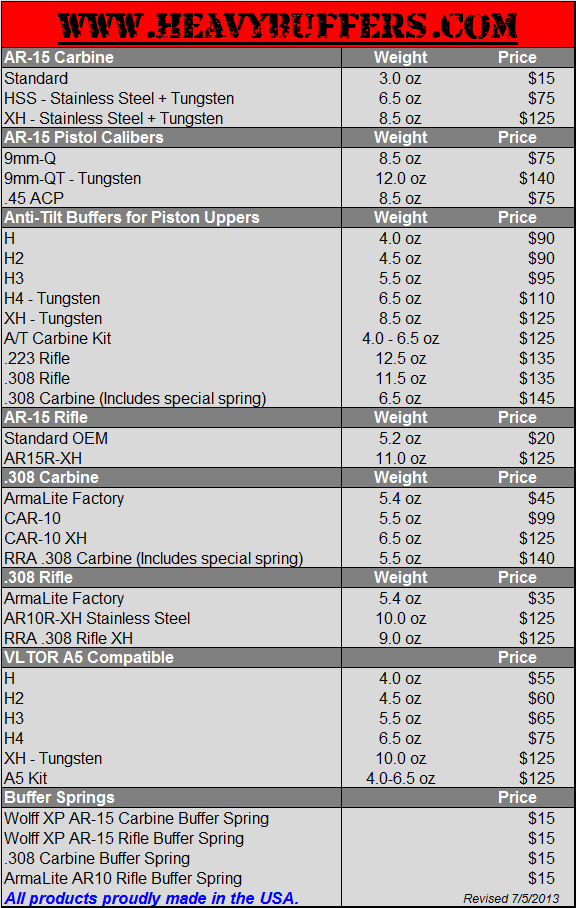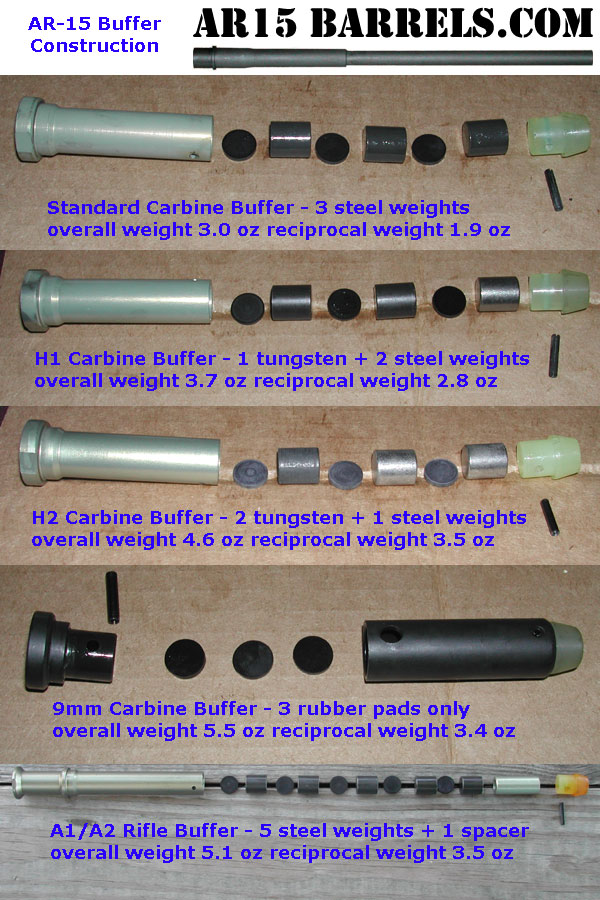All of this below applies to carbine length extensions.
The order I listed were from lightest to heaviest.
The rifle length gas is the "softest" so will work well with the lighter buffers.
The carbine gas is the "harshest" so it needs a heavier buffer for optimum service life.
The shorter gas systems need the heavier buffers.
The distance from the gas hole in the barrel back to the action is shorter.
So it takes less time for the gas to reach the action.
So the pressures are higher and the recoil more "violent".
The action unlocks more abruptly, things fly around faster.
A heavier buffer keeps the action locked longer and lets the pressure subside slightly.
The original design is the rifle length gas system.
By the time the bullet gets to the gas hole the pressure "spike" is much lower and the slope of the pressure curve flatter.
If you put an H3 buffer in a weapon with rifle gas, you may get short stroking.
The rifle buffer weighs the same as an H3. The Carbine spring, however is stiffer.
So the combo of stiffer spring and heavy buffer may prevent reliable cycling.
This is the reason midlength was developed.
If you are limited to 16" barrel (civilian minimum without NFA stamp), then you can benefit from the longer gas system on the same size barrel.
A rifle gas system would work fine with a CAR buffer in a carbine length extension.
In general a midlength and rifle length can use the lighter CAR buffer with no problem.
Most carbine length rifles also come with CAR weight buffers from the factory.
But the action is violent and will be prone to damage overtime. The Navy has a very good report on this for their Mk18s.
The military M4s use H or H2 buffers. H for the M4s and H2 for the full auto M4A1 IIRC. And the H3 is for the ~10" barreled guns.
Some people even use the heavy 9mm buffer with good results.
It's fairly easy to open up the buffer and trade out weights inside to experiment.
An H3 has 3 tungsten weights inside (not pictured below).
For me.
I use H2 buffers in my carbine gas weapons and H in my midlengths.
Slash has a good table of the buffers and weights

AR-15 Barrels pic of inside construction.

 Win a FREE Membership!
Win a FREE Membership!